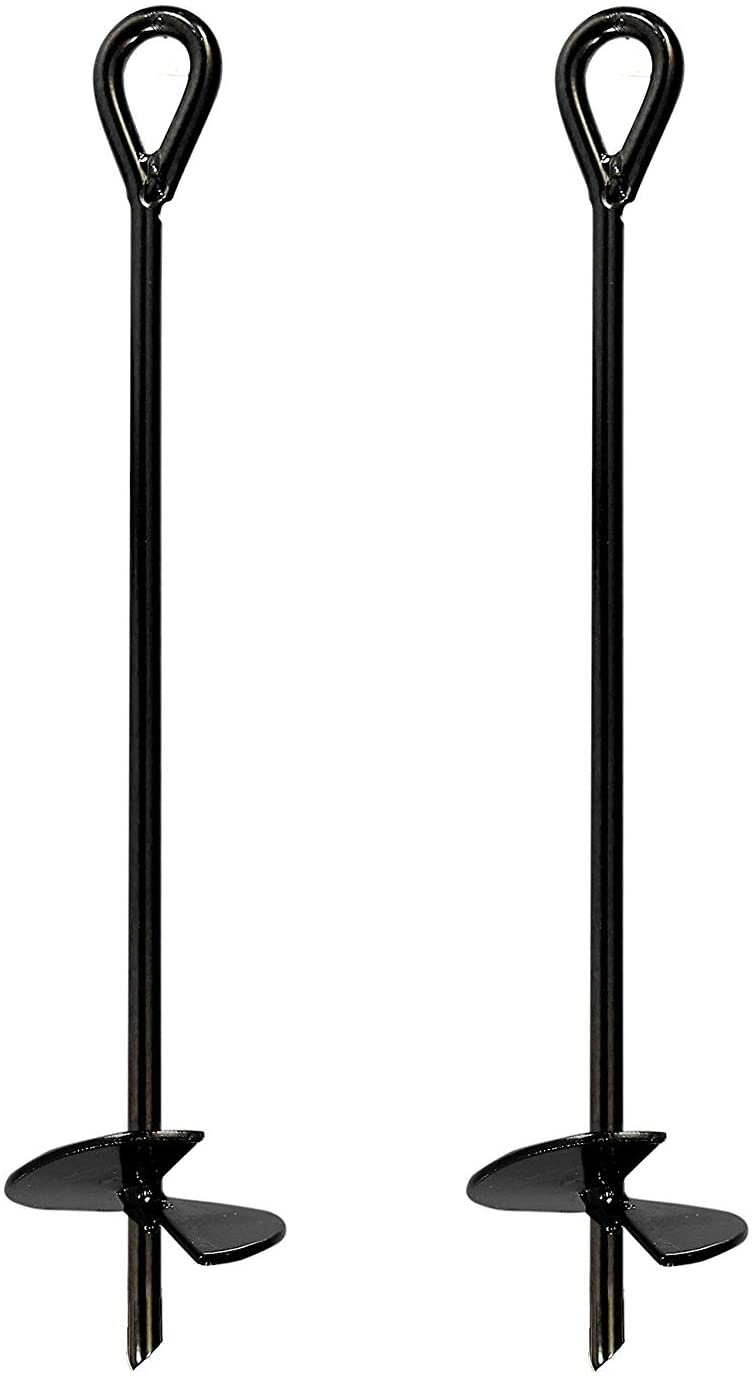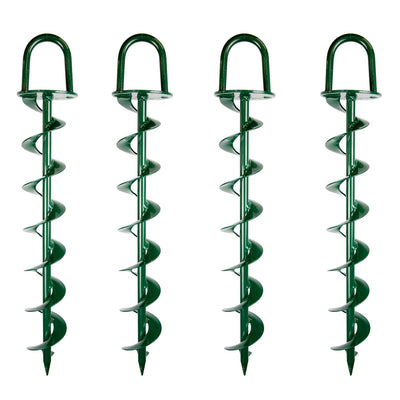Knowing the Importance of a Ground Anchor in Protecting Heavy Structures
Wiki Article
Discover the Various Kinds Of Ground Support for Your Following Project
From auger supports, which succeed in diverse dirt problems, to risk anchors designed for temporary installations, the choices are various. In addition, concrete and screw supports existing one-of-a-kind benefits in certain situations, while deadman anchors are customized for applications requiring resistance to lateral pressures.
Auger Anchors
Auger anchors are a prominent choice in various construction and landscaping jobs as a result of their unique layout and effective anchoring capabilities. These anchors are composed of a helical screw-like shaft that is driven right into the ground, enabling for a protected and steady hold. The spiral layout facilitates simple setup and takes full advantage of resistance versus side pressures, making auger supports especially effective in applications such as secure fencing, temporary structures, and erosion control.The installment procedure of auger anchors is fairly simple. They can be manually or mechanically installed, relying on the dimension and required depth. This flexibility permits their use in diverse dirt problems, from sandy to clayey terrains. Auger supports can be quickly eliminated and reused, which adds to their cost-effectiveness and sustainability.
Among the significant benefits of auger supports is their ability to distribute loads evenly across the surrounding soil, decreasing the risk of soil disruption and minimizing ecological influence. In addition, they are less susceptible to loosening or heaving gradually compared to traditional anchoring techniques. As a result, auger anchors are a superb option for tasks calling for dependable and sturdy anchoring services.

Stake Anchors
When it involves securing structures in a variety of outside applications, risk anchors use a uncomplicated and reputable remedy. These supports are normally built from resilient products such as steel or light weight aluminum, created to stand up to ecological stress and anxieties while supplying optimum security. Their simple layout permits fast installation, making them an ideal choice for short-term or irreversible anchoring requirements.Stake anchors are particularly helpful in safeguarding outdoors tents, covers, and other lightweight structures versus wind and weather condition. They work by being driven right into the ground at an angle, producing a strong hold that resists pull-out forces - Ground Anchor. The effectiveness of risk supports depends on numerous variables, including dirt kind, dampness material, and the angle of installation
For included safety and security, several risk anchors include add-on points for straps or ropes, enabling for tension adjustments as needed. In applications such as landscape design or building and construction, they can efficiently stabilize devices or frameworks on irregular surface. In general, risk supports supply a functional and cost-effective remedy for securing different exterior installations, making them a favored choice for service providers and do it yourself enthusiasts alike.
Concrete Anchors
Concrete supports provide a robust solution for protecting structures to concrete surfaces, guaranteeing security and safety and security in different applications. These supports are essential for projects varying from property constructions to large-scale industrial installments. They come in different types, consisting of expansion supports, glue supports, and undercut supports, each developed for certain lots needs and ecological conditions.
When installed,Development anchors depend on mechanical mechanisms to grasp the concrete. They are excellent for medium to heavy-duty applications. Sticky supports make use of high-strength epoxy or material to bond the support to the concrete, offering superior load-bearing capabilities, specifically in split concrete circumstances. Undercut supports produce an unique shape within the concrete, offering outstanding holding power, especially in applications where tensile loads are prevalent.
Selecting the appropriate concrete anchor includes taking into consideration aspects such as the weight of the tons, the condition of the concrete, and ecological conditions. Proper installment strategies are crucial to ensure ideal efficiency and integrity. When implemented appropriately, concrete anchors substantially improve the structural integrity of numerous projects, making them important in modern-day construction methods. Comprehending the specific needs of your task will assist in selecting the ideal sort of concrete support for the task.
Screw Anchors

Screw anchors are a flexible securing service that can be properly used in a variety of applications where typical concrete anchors may not be adequate. These this anchors are composed of a helical style that enables them to be quickly driven right into the ground, making them perfect for usage in soil and other substratums. Their distinct framework gives exceptional holding power and resistance to pull-out forces, making them ideal for many projects, from landscaping to structural support.
Among the key advantages of screw supports is their simplicity of installment. They call for marginal tools and can often be installed without the demand for excavation, which conserves both time and labor prices. In addition, screw anchors can be eliminated and reused, using a sustainable solution for momentary applications.
Screw supports are specifically valuable in areas where dirt problems are testing, such as sandy or loose soils. Their capacity to be installed at varying depths enables modification based upon particular project needs. Generally, screw supports provide a reliable and efficient anchoring approach, making them a superb choice for designers and contractors looking for effective solutions for their jobs.
Deadman Anchors
Deadman anchors act as a durable option for maintaining frameworks in tough conditions, especially where conventional anchoring approaches may fall short. These supports contain large, heavy items buried underground, which produce resistance versus lateral forces. The layout generally entails a straight component, such as a block of concrete or a steel plate, hidden in the soil, to which bands or cords are connected.The effectiveness of deadman supports depends on their ability to disperse lots over a larger location, decreasing the risk of failing in unpredictable dirt conditions. They are especially advantageous in applications such as keeping wall surfaces, short-lived frameworks, and incline stablizing, where soil activity can jeopardize the honesty of the structure.
Installation of deadman supports calls for cautious preparation to guarantee they are placed at the right deepness and positioning, optimizing their load-bearing capability. While they may call for even more labor and product than light-weight anchors, their dependability in damaging problems makes them indispensable for lasting projects. In addition, deadman supports are flexible and anonymous can be adjusted to various applications, making them a best selection for designers facing unique challenges in their projects.
Verdict
Auger supports excel in varied dirt conditions, while stake anchors match short-term applications. For concrete surface areas, expansion description and sticky supports offer trustworthy alternatives, and screw anchors offer convenience in difficult surfaces.Furthermore, concrete and screw supports existing special benefits in specific situations, while deadman anchors are tailored for applications calling for resistance to side forces - Ground Anchor.Auger supports are a prominent selection in various building and construction and landscaping jobs due to their unique design and efficient anchoring abilities. They come in different kinds, consisting of growth supports, sticky anchors, and undercut anchors, each designed for particular tons demands and ecological problems
Sticky supports make use of high-strength epoxy or resin to bond the anchor to the concrete, supplying superior load-bearing capabilities, particularly in broken concrete scenarios. Overall, screw supports provide a effective and reputable anchoring method, making them an outstanding option for contractors and designers looking for effective solutions for their jobs.
Report this wiki page